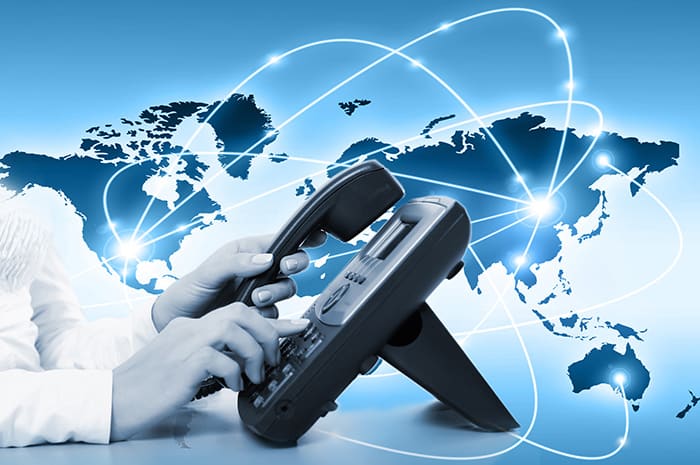Making an international call to Japan involves a certain process that one needs to follow correctly. Initially, you need to know the country code for Japan, which is 81. Prior to dialing this code, you should first dial your country’s exit code, also known as the international dialing code, which varies by country.
For instance, if you are calling from the United States or Canada, you need to dial 011 before the country code. Next, you should dial the city or area code. This is typically one or two digits and is essential to route your call to the right location within Japan. For example, the area code for Tokyo is 3, so you would dial 81 for Japan, then 3 for Tokyo. Following this, dial the local telephone number. It’s crucial to remember to omit the first 0 if it is included in the local number. When making an international call, it’s recommended to be aware of the time difference to avoid disturbing the receiver at inappropriate hours.
Also, consider checking your phone plan to ensure you’re aware of any potential additional charges for international calls. You may also use various applications and services, like Skype, WhatsApp, or Viber, which can offer cheaper or even free calls if both parties are connected to the internet. With these steps, you should be able to seamlessly make an international call to Japan.

Understanding International Dialing Codes
International dialing codes are crucial components of the global telecommunication system, facilitating seamless phone communication across different countries. Designed as a prefix to the phone numbers, these codes are specific to each country, enabling automatic routing of calls from one country to another. Each nation is assigned a unique code, which could be one, two, or three digits long. For instance, the United States and Canada share the code ‘1’, while the United Kingdom uses ’44’. When dialing internationally, one typically begins with the plus symbol followed by the country’s specific dialing code, followed by the area or city code (if applicable), and finally the individual’s phone number.
These codes form an integral part of the international telecommunication union’s (ITU) global numbering plan known as E.164. This plan ensures standardization and consistency in the global phone system, making international communication easier and more efficient. To use these codes effectively, one must understand their structure and usage. For example, if you are in the United States and want to call someone in the United Kingdom, you would dial “+44,” followed by the person’s phone number.
However, understanding international dialing codes goes beyond merely knowing the country codes. It also involves knowing when and how to drop certain digits. For instance, in many countries, you drop the leading ‘0’ from the area or city code when dialing internationally. The exceptions to these rules, the different formats of phone numbers in various countries, and the changes in codes over time due to geopolitical changes can all add layers of complexity to the process.
Therefore, comprehending international dialing codes requires some level of awareness, practice, and occasionally, research. But once mastered, it becomes a simple yet significant tool in our increasingly interconnected world, allowing communication between different nations to occur smoothly. This understanding is particularly beneficial for businesses operating in multiple countries, frequent travelers, and individuals with friends or relatives abroad.
Choosing the Right Calling Method
Choosing the appropriate method of communication, particularly calling, is crucial in contemporary society for various reasons. Not only does it ensure that your message is conveyed effectively, but it also fosters healthy relationships, whether personal or professional. There are a myriad of methods to choose from, such as video calling, voice calling, or internet calling. Each method has its own unique features, advantages, and potential drawbacks.
Video calling, for example, is highly suitable for occasions when visual cues are essential to the conversation. It allows you to observe non-verbal cues, such as facial expressions and body language, which can contribute immensely to understanding the context of the conversation. However, video calls may not always be the most practical choice, especially in situations where a high-speed internet connection is not available.
On the other hand, voice calling can be a more prudent choice for situations that require a quick exchange of information. It is less dependent on a robust internet connection and can be accomplished even with a basic telephone line. However, it lacks the visual element and may not be the ideal choice for conversations that require a high level of empathy or understanding.
Internet calling, which includes both video and voice calls, is often the most flexible and convenient option, especially for long-distance communication. It allows for real-time interaction, irrespective of geographical barriers. However, it is heavily reliant on a steady and strong internet connection, and may not be feasible in areas with poor connectivity.
Ultimately, the key to choosing the right calling method lies in understanding the nature of the conversation and the constraints of the parties involved. It involves a careful assessment of the situation and adaption to the available resources. By doing so, you can ensure a smooth and productive conversation, which is critical for successful communication in today’s connected world.

Preparing for the Call
Preparing for the call is a crucial step for professionals across various fields, from customer service representatives to sales executives, or even emergency responders. This preparation does not merely involve having a clear voice or a friendly demeanor, but also demands a thorough understanding of the subject matter and potential queries that may be posed. It entails being equipped with comprehensive knowledge, relevant resources, and a keen readiness to address any concerns or queries that may arise. It is not merely a reactive process, but an active one involving research, practice, and continuous learning.
The process begins with a deep dive into the subject matter. Be it a new product, a policy change, or an ongoing crisis, it is essential to gather as much information as possible. This information not only helps in responding accurately but also in anticipating the questions that might come up. The next step is to organize this information in a coherent and accessible manner. It could involve creating a guide or a script that can be quickly referred to during the call.
Apart from the subject matter, understanding the audience is also a critical part of preparation. Knowing their background, preferences, needs, and potential pain points can help in tailoring the conversation to their satisfaction. Moreover, it aids in empathizing with them and building a rapport, which can significantly influence the outcome of the call.
Practicing the call can also be extremely beneficial. It can help in refining the delivery, identifying gaps in the preparation, and building confidence. It also allows one to prepare for different scenarios and responses, thus reducing the likelihood of being caught off-guard during the actual call.
Lastly, preparing for the call also involves preparing oneself mentally and emotionally. It requires patience, resilience, and the ability to handle criticism and rejection. It means being ready to listen, to empathize, and to adapt to the situation.
In conclusion, preparing for the call is a comprehensive process that demands thorough knowledge, adequate resources, strong communication skills, and emotional readiness. It is a key factor in ensuring effective communication and achieving desired outcomes.
Making the Call
Making the call is often considered a decisive moment that can significantly influence the direction of an event or scenario. This phrase typically represents the process of making a crucial decision or choice that has the potential to transform the situation at hand. The call could be a personal one, relating to relationships, career choices or lifestyle changes, or it could be a professional one, involving complex business decisions, investment opportunities, or even political strategies. In either case, the person making the call needs to critically analyze the situation, weigh the possible outcomes, and determine the best course of action.
The ability to make the call effectively usually requires a combination of experience, knowledge, intuition, and courage. It may necessitate taking calculated risks and stepping outside of one’s comfort zone. However, hesitation or indecision in making the call could lead to missed opportunities or negative repercussions. Therefore, it is crucial to approach such moments with confidence and conviction, trusting in one’s judgment and abilities.
The consequences of the call can be highly impactful, sometimes leading to significant personal or professional growth. Nonetheless, it is equally important to be prepared for potential setbacks and to learn from them, as they can provide valuable insights for future decision-making. Thus, making the call is not just about the immediate decision, but also about the learning and growth that comes from navigating through its aftermath.

Tips for Reducing Call Costs
Reducing call costs can significantly decrease your overall communication expenses, especially if your business relies heavily on telephony. One effective strategy is to take advantage of VoIP (Voice over Internet Protocol) services. Instead of using traditional phone lines, VoIP transmits calls over the internet. In many cases, VoIP services offer flat rates for unlimited calls, which can result in substantial savings. You can also consider integrating your VoIP system with your business software to streamline operations further.
Another way to minimize call costs is by consolidating all your business communication needs with a single provider. This is often cheaper than sourcing different services from multiple providers. Additionally, using a cloud-based phone system can help you save on hardware costs and maintenance. Utilizing a call back feature on your website can also be a cost-effective move. It allows visitors to request a call from your team, which can help manage call volume and reduce costs.
Furthermore, always be sure to analyze your call data. Understanding when and where calls are coming from can help you plan your resources better and avoid unnecessary costs. Lastly, don’t forget to negotiate with your service provider. Many telecom companies are willing to provide custom packages or discounts to retain their customers, so it’s always worth asking for a better deal. Implementing these strategies can lead to significant savings, allowing you to allocate resources to other important areas of your business.
